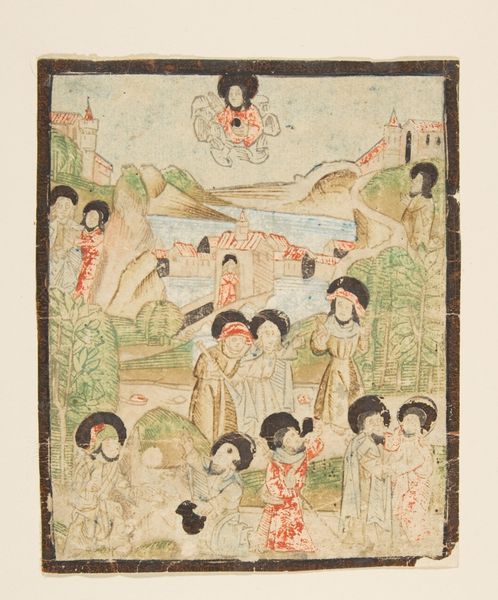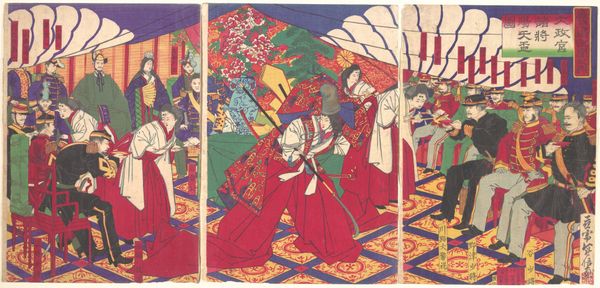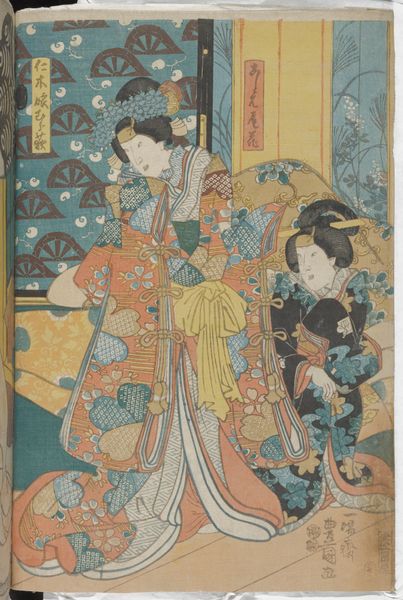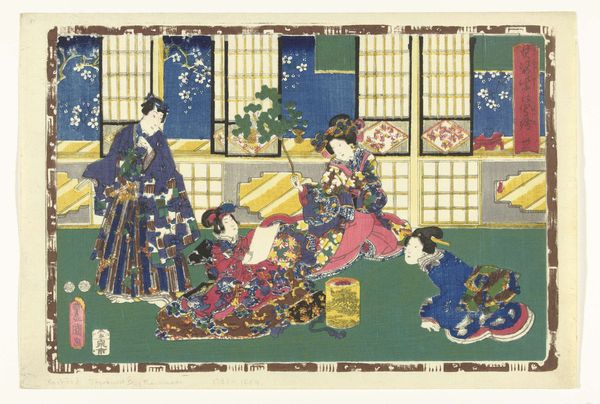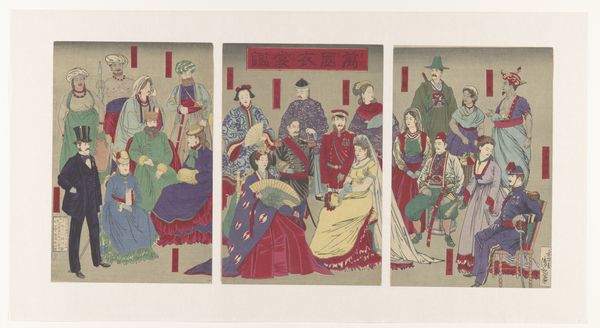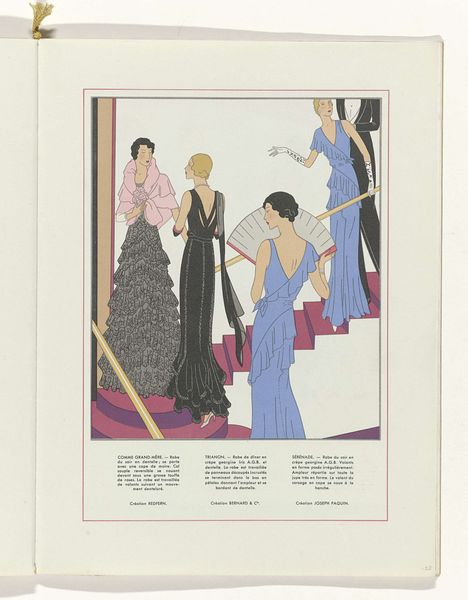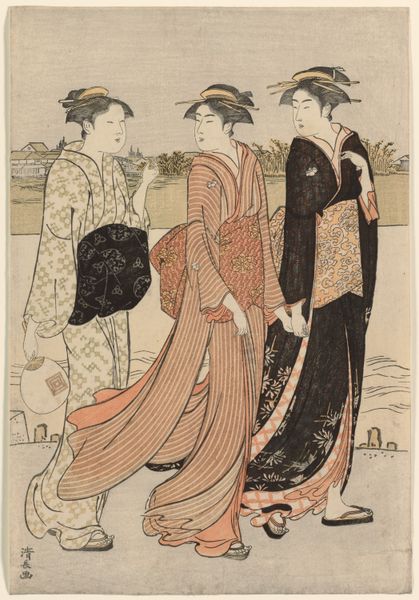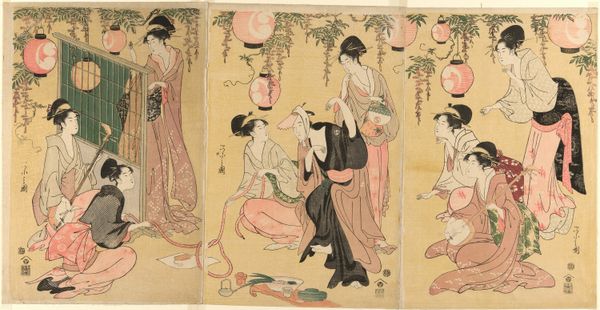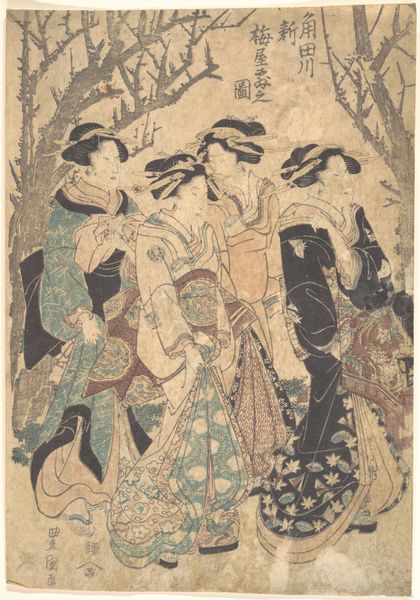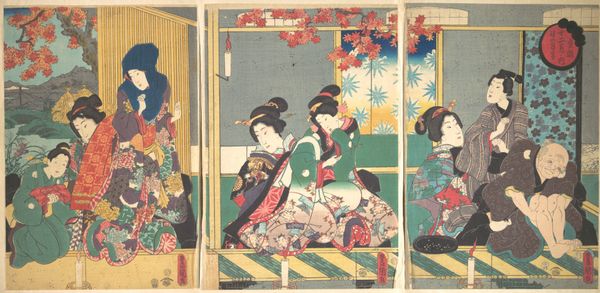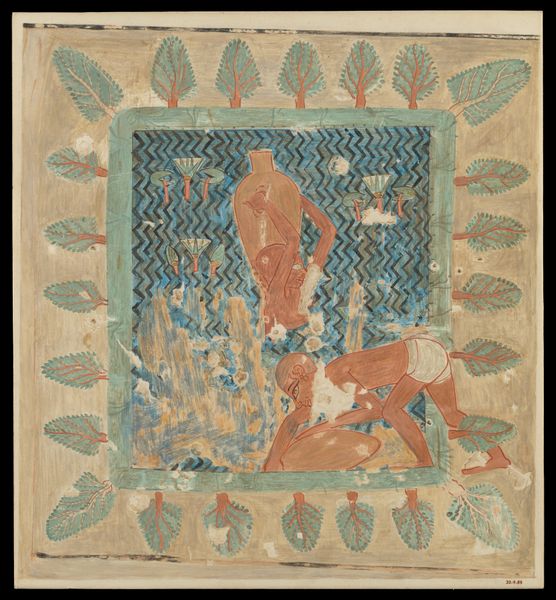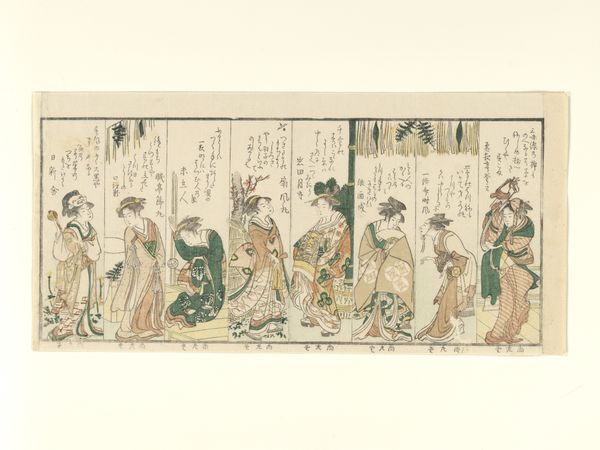
painting, watercolor
#
portrait
#
medieval
#
painting
#
figuration
#
watercolor
#
historical fashion
#
watercolour illustration
#
history-painting
Dimensions: height 380 mm, width 490 mm
Copyright: Rijks Museum: Open Domain
Editor: Here we have "Paintings from the choir of the Pieterskerk in Leiden" by Tiemen Hooiberg, created between 1844 and 1846, using watercolors. It has a really interesting medieval feel, like something from a stained-glass window. What stories do you think these figures are telling? Curator: These images offer a fascinating window into cultural memory. Each figure, carefully rendered, isn't just a portrait but a repository of meaning accumulated over centuries. Notice the recurring halos. What do they immediately suggest to you? Editor: Divinity, holiness. I guess it marks them as saints? Curator: Precisely. And the objects they hold—the crosses, books, and staffs. These aren't arbitrary. Each is an attribute, a visual cue linking the figure to a specific story, a specific virtue, or role within the church. What about the limited color palette—mostly reds, greens, and creams? Does that strike you as significant? Editor: It feels… intentional? Maybe to evoke a sense of age or to connect with earlier artistic traditions? Curator: Exactly. These colors would have had specific associations in the medieval period, perhaps symbolizing faith, hope, and charity. Hooiberg is deliberately evoking a sense of the past, but through a 19th-century lens. This wasn’t just copying, but reinterpreting. This interest in medieval aesthetics points towards a broader cultural trend, doesn't it? Editor: Yes, the revival of interest in the Middle Ages during the Romantic era! I hadn't thought of it that way. Seeing it as a 19th-century interpretation gives it so much more depth. Curator: Indeed! It’s about the enduring power of symbols and how we keep reshaping them to reflect our present.
Comments
No comments
Be the first to comment and join the conversation on the ultimate creative platform.
